Leviton has announced that is has secured a supply contract with BAE Systems to provide cabling for the Batch 1 Type 26 frigates.
The firm say that the Brand-Rex High Performance Cables will support a variety of communication, power, and mission-critical systems onboard the vessels.
Leviton say it has already delivered approximately 490 kilometers of cable for the first order from BAE Systems for the Type 26 frigates.
“Leviton is proud to partner with BAE Systems on this prestigious project,” said Marc Pawson, Sales Manager for Leviton.
“We are excited to provide British-made cables and bring our expertise with complex cabling requirements that must meet high-specification demands.”
Leviton is an approved supplier of copper and fiber optic cables for military and maritime applications, offering custom cables and hybrid constructions with high performance insulating and outer materials optimized for military systems and infrastructure.
The Brand-Rex High Performance Cables are manufactured to world-class British Naval standards at Leviton’s factory in Leigh, England.
Leviton say that it also manufactures specialty cabling for other extreme environments, including rail, automotive, industrial, and aerospace applications.


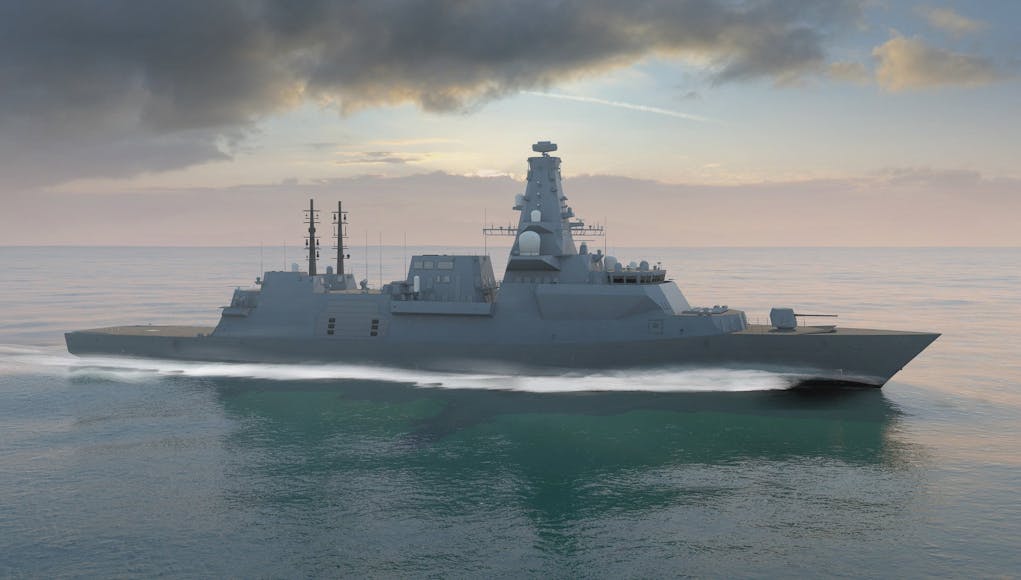
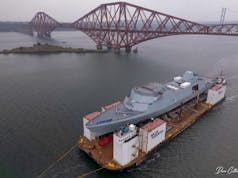

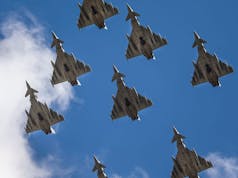
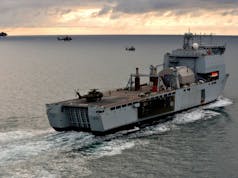
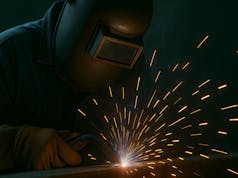

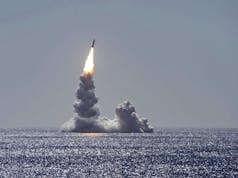

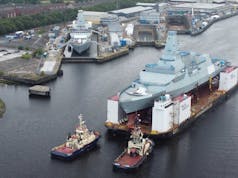


Good looking ship. just wondering if the Aussie and Candian versions will have the same electronics and weapons fit
farouk – Not from the information and pictures released so far,as it stands the T26 will certainly consist of Three Variants, with the Canadian order possibly having Two on its own ( 12 Halifax class and 3 Iroquois replacement’s)
Not going on the models displayed at DSEI last week.
Many thanks Paul for your swift reply. On that note (and where I was going with my orginal post) who will have the most effective varient?
You need a better brain on the case to answer that question than I can provide, Farouk.
Thought I’d read somewhere before that the UK fit-out is TBC, but that in itself is TBC. Thanks.
Hardly definitive by any stretch, but apparently the Canadian version is slated to have the ASW fit-out, wide area air defence, and land attack. The report I saw didn’t state two sub-types for the different roles as suggested above, but it would certainly make some sense. If it is one type, then the Canadian one would seem to be fitted for the broadest set of missions, although how they’d fit in sufficient missiles/vertical launched torpedoes for all 3 missions I’m not really sure.
The Australians state an anti-ship capability, most likely from the cannisters that Julian mentioned. Frankly, I’d go with the Australian one, but keeping the RN standard combat systems and radar (i.e. just add some more ASMs!). We don’t need more than local area air defence because we have T45s, so a T26 wouldn’t be tasked with providing air cover for a distributed fleet
Pretty sure the RAN version has an all-Mk41 forward silo vs the RN Mk41 plus dedicated cold-launch CAMM silos. I think the RAN T26 has 32 Mk41 and no Sea Ceptor vs RN 24 Mk41 plus 24 Sea Ceptor. The RAN spec also has 2 x 4 canister launchers I believe and since RAN is not adopting Sea Ceptor I would assume those would go in place of the midships 24 x Sea Ceptor silo on the RN T26. Twin phalanx + twin 30mm would seem to be common to both RN & RAN variants. I haven’t really researched spec on the RCN variant.
On the twin Phalanx + twin 30mm, now that T31e has gone with a main gun (57mm) + twin 40mm does anyone else wonder whether twin 40mm would make sense on the RN T26s for additional range and anti-air capability? Until the T31e a significant counter-argument would be the introduction of an additional logistics chain but that is no longer a factor after the T31 descision and both 30mm and 40mm are non-deck-penetrating so no issues there.
I’m not sure what the incremental cost would be of 40mm vs 30mm, especially if it could be offset by selling off the 30mm (which presumably are coming off T23), but for our top-of-the-line frigates having the same secondary gun capability as the T31s doesn’t seem like too big an ask.
Julian,
Many thanks.
Slight correction: the T26 has 24 Mk41 + 48 Sea Ceptor, not 24.
I’m in favour of adding the 40mm Bofors to T26, and backfit to T45, but I’d actually replace the Phalanx mount with it. Assuming the MK4 Bofors mount could be integrated into their combat systems (unlike Phalanx, it would require the ship’s sensors), the bigger, guided shells are more likely to be effective as a CIWS against modern and future weapons. Plus, it lets you keep the 30mm mounts and integrate the 5-shot Martlet missile launcher onto it.
I was initially only talking about forward silo, 24 Mk41 + 24 Sea Ceptor replaced by I think 32 Mk41 in RAN variant and then the other 24 RN Sea Ceptor in the midships silo replaced I assume by the 8 canisters for the RAN T26. Sorry if that wasn’t clear (which on reading it back it certainly wasn’t but it was what I meant – honest!).
On 40mm I suppose it’s also a case of where does it end. Given the standard RFA defensive fit seems to be trending towards 2 x 30mm + sometimes-fitted 2 x Phalanx I would certainly be more comfortable if that evolved to using 40mm. I note when discussing swapping out Phalanx you mentioned the requirement for sensor integration re the 40mm. Does that require higher-end sensors than RFA vessels currently have this making it a non-starter for RFA fitout? Also, does 30mm need integration with ships sensors or is it far easier from that perspective?
Sorry for all the questions, I’m trying to learn from the answers.
I think 24 mk41 strike and 48 camm is probably the perfect fit for the T26. It does make you wonder in relation to the design being adapted for T45 replacement, if there is space for 2 sets of 24 seaceptor with their low packing density, how many tactical mk41/Sylver could we fit if needed? Probably at least 2x 18 if not the full 24. In theory, the T4X could have something like 24 VLS A70 for 12 larger bmd Aster and 12 future heavyweight asm/land attack missile, and 24 VLS A50 for seaviper all at the bow. If A50 can be quad packed which I think it can, we could then have another 24 mid ship with 48 seaceptor and 48 Spear 3 or what split of the 96 slots you wants.
We could transfer over the 48 cells from the T45 to save money and only have to purchase the 24 V70 to save money. 48 short range, 24 medium range, 12 long range air defence, 48 medium range swarming land or maritime attack with EW capability, and 12 long range heavy weight land/maritime attack. Plus a 5” with potentially 100km shells in the future, dragon fire, martlet and 2x ciws and that is a serious, well rounded and potent destroyer! Just need to get Sampson mk2 sorted and Perseus developed and there won’t be much else to develop with most of the design changes undertaken with the Aussie/Canadian variants being designed.
The DS30M is a point and squirt weapon, it is not radar guided. It has a electro-optical day/night camera that the operator uses to aim the weapon. In this form it is not suited as a CIWS.
The 40mm is married to an electro-optic sensor but is also radar controlled thus giving it a CIWS capability.
Julian, I missed the gun selection for Type 31. Have they gone with 57mm main gun and twin 40mm? Do you have the source for that?
Hi Paul. Yes, there’s an article on the Savetheroyalnavy site here…
https://www.savetheroyalnavy.org/more-details-of-the-royal-navys-type-31-frigate-emerge/
Hi Julian. Thanks !
This T31 looks handy after all. Need more than 5!
Yes, more would be good. The proposed guns and Sea Ceptor provide credible fire power against swarm attacks.
I did have my doubts about LMM for swarms, whether Wildcat launched or attached to the 30mms. Feel much happier with the Bofors arrangement.
I’m also hoping the first 5 will receive the interrim Harpoon replacement, e.g. NSM ( separate budget?). Together with Wildcat and Sea Venom this would give these T31 some offensive anti ship capability against larger ships, corvettes and frigates sporting a 76mm and Exocet etc.
And on electronics the Aussies are going with CEAFAR not the Artisan to be used on the RN vessels.
Does anyone know what primary radar the Canadians are going to use? Maybe that’s going to vary depending on specialist AAW version or not.
Julain wrote:
Does anyone know what primary radar the Canadians are going to use?
Found this on Janes from this May:(Please excuse the long C&P)
Full steam ahead [CS19D1]
A design based on the UK Royal Navy’s (RN’s) Type 26 Global Combat Ship has been selected as the basis for the Royal Canadian Navy’s (RCN’s) next generation of surface combatants.
The award of an initial C$185 million contract to Irving Shipbuilding for the design phase of the Canadian Surface Combatant (CSC) programme was confirmed in February this year. Lockheed Martin Canada – partnered with BAE Systems, CAE, L3 Technologies, MDA, and Ultra Electronics Maritime Systems under the banner of Canada’s Combat Ship Team – has in turn been contracted by Irving Shipbuilding for design phase activities.
Selection for CSC is the second export success for BAE Systems’ Type 26 design, following on from the selection last year of a Global Combat Ship variant for the Royal Australian Navy’s (RAN’s) Project Sea 5000 Hunter-class frigate programme. Representatives from the RN, RAN and RCN on 1 May signed a charter formally acknowledging Canada’s entry into the Global Combat Ship Users Group.
The CSC acquisition projects the construction of 15 ships, to be built by Irving Shipbuilding at its yard in Halifax, Nova Scotia, to replace the RCN’s 12 Halifax-class frigates and three now-retired Iroquois-class destroyers.
With a total estimated project budget of C$56-60 billion, the CSC programme is the largest and most complex procurement ever undertaken by the Canadian government. Construction of the first ship is planned to begin in the early 2020s.
Lockheed Martin Canada, proposing a design derived from Type 26, was last October announced as preferred bidder for the CSC design, combat system and ship integration by Public Services and Procurement Canada, being selected ahead of rival bids from Alion (offering a design based on the Royal Netherlands Navy’s De Zeven Provinciën-class frigate) and Navantia (teamed with Saab and CEA Technologies to offer a customised variant of the Spanish Navy’s F-105 frigate design).
Alion in November called on the Canadian International Trade Tribunal to overturn Lockheed Martin Canada’s downselection, arguing that the Type 26 Global Combat Ship design was noncompliant with the RCN’s requirements. The trade tribunal initially ordered the government not to negotiate a contract with Lockheed Martin Canada until it could fully investigate Alion’s complaint. However, it rescinded that decision in December, allowing negotiations to continue, before dismissing Alion’s case outright on 31 January.
Following February’s contract awards, the Canadian government and Irving Shipbuilding are now working with Lockheed Martin Canada and its industry team to customise the GCS ship design to meet RCN requirements and incorporate Canadian systems and equipment. The design phase – the value of which will increase as engineering work progresses – is expected to take three to four years to complete.
Lockheed Martin Canada chose to offer the Type 26 Global Combat Ship because it was the closest warship design to Canada’s specific requirements, thus necessitating the fewest and least risky design changes. Also, the completely digital design is expected to minimise design transition risk, and offer the lowest-risk path to manufacture and production at the Irving Shipyard facility.
From an operational perspective, the flexibility, versatility and adaptability intrinsic to the Type 26 Global Combat ship enable the ship to undertake a full spectrum of roles from humanitarian assistance to high-intensity conflicts, including anti-submarine warfare (ASW) and air defence. The ship has been designed with an extremely low acoustic signature to maximise its performance in the ASW role.
Also, with the UK’s Type 26 programme running three years ahead of CSC, there is an expectation that Canada will benefit from an active production line where – due to its current stage in the manufacturing lifecycle – there will be no obsolescence issues.
While leveraging the acoustically quiet hull form and machinery package from the RN’s Type 26 frigate, the Global Combat Ship design offered by Canada’s Combat Ship Team features a much-revised combat system tailored to the CSC requirement, including Lockheed Martin Canada’s own CMS 330 combat management system and a Lockheed Martin S-band solid state active phased array radar.
Ultra Electronics Maritime Systems, as the ASW lead, will provide a low-frequency active and passive towed sonar system paired with its next-generation hull-mounted sonar. The company will also lead the integration of these sensors with sonobuoys and other capabilities for wide-area underwater surveillance.
BAE Systems has received a contract from Lockheed Martin Canada for the design of the Type 26 variant for CSC. To reduce risk and save time, the redesign work specific to the Canadian derivative is making use of existing engineering resources at BAE Systems’ Scotstoun site in Scotland.
This approach has been designed to facilitate the quickest transition into build, so avoiding gaps in industrial capability at Irving between the end of the six-ship Arctic and Offshore Patrol Ships programme and the start of CSC.
Design change required to adapt the Type 26 platform to meet the CSC requirement is estimated at only 10 per cent, with work largely focused on topside changes to accommodate elements of the Lockheed Martin Canada combat system. A large part of the change activity is a new mast to accommodate the solid state active phased array radar.
Under the CSC evaluation framework, bidders were incentivised to submit a value proposition that would maximise Canadian participation in CSC design-phase engineering/ integration services, and also seek to incorporate high-technology Canadian systems and equipment into the ships. Lockheed Martin Canada’s value proposition commits to performing at least 58 per cent of the design phase engineering/integration services work in Canada.
Through the design phase, Lockheed Martin Canada will incorporate dozens of Canadian systems and equipment into the CSC design involving leading Canadian enterprises. Also, as part of its commitment to work with local industry, the company has committed to invest 10 per cent of the total subcontract value into Canadian small and medium-size businesses.
Thanks Farouk
Interesting correspondence on this one. Playing fantasy Fleet’s for a moment it would be good to have a face off between all three variants to measure their effectiveness in various scenarios. Of course that won’t happen for at least a decade, and most probably longer!
Here’s another thought, if the Canucks are going for an Iroquois replacement presumably it’s primary focus is AAW. Will there be cross fertilisation from Canada to the UK to influence the design of the T45 replacement, presumably T46?
The walls have ears.
Armchair intel oppos on this page getting giddy about things that have nothing to do with them.
RAN ships will also have Aegis combat system, SAAB tactical interface and CEC.
The main difference in appearance will be in the foremast atop the bridge. Otherwise, they have the same basic shape, superstructure and hull form. All three will be beautiful ships.
Slightly boring story, massive mark up for Bae.
American company.
I really don’t get the rationale behind the T26 frigate? It is the Navy’s primary ASW asset apart from the subs. Yet they seem to want to fit it out as a modern day cruiser. The main purpose of the frigate is to protect either the sea lanes or a task group. To protect the sea lanes the ships will be operating generally over deep water sprinting and drifting to catch subs. To protect a task group it will be operating on the fringes miles from the task group to minimise background noise. The 1SL has intimated that when ever a carrier is deployed two T26s will be part of the group leaving 6, with two probably in maintenance, leaving us with 4, which should be off hunting subs. The ship is being fitted out with the 5″ gun for NGFS and will possibly get TLAM or the joint Anglo/French multi-purpose attack missile – why?
Surely the NGFS and land attack roles should be the T31’s role as a general purpose frigate, thus leaving the T26 to hunt subs.
It also has the wrong primary radar fitted, needs replacing.
Right, rant over, nice looking ship by the way.
Hi DaveyB
I’m pretty sure the T26 is also designed to protect out continuously at sea deterrent… Not sure how many of the 8 that would be though. But even then… 2 escorting the QE class, perhaps 2 in maintenance, 2 protecting the tridents/dreadnoughts, that really only leaves 2 spare.
Slightly concerning no?
M@
Actually… Add 1 to one of the Standing NATO Maritime Groups and 1 at an exercise, that leaves 0 spare lol
M@
That is a fair question, and perhaps also you could say that the T26 and T31 are doing the wrong roles in that case. Perhaps the T26 should be the general purpose cruiser, and the T31 the lightweight stripped down ASW frigate as the T23 was initially envisoned.
Or maybe the need for Artisan and anti ship missiles comes from the perceived future threats to the ASW fleet, that when operating in the North Atlantic they would be exposed to long range naval bombers and guided missile cruisers and destroyers. In the 1970s, the concept of the through deck cruisers/harrier carriers was to provide an austere naval fighter to intercept Soviet naval bombers threatening the ASW fleet while additional ASW helicopters from the carriers supported the frigates in sub hunting. But the new fleet carriers are designed for carrier strike, and would therefore be unlikely to be able to give protection to the ASW patrols, so maybe the fit-out for the T26 is to allow them to operate independently in contested environments.
Or maybe, as the ship was conceived over 10 years ago, when the submarine threat was negligible, there was a desire to make the T26 more of a cruiser so it could fulfil a broader range of missions that the Navy is often asked to do, but if it came to all-out war then they would focus on the ASW role.
In a similar way, given how few Astutes we have, I do wonder whether they are over tasked: hunter-killer work; escorting carrier strike group; intelligence gathering; land strike. It is great they can do all these roles because outside of an all-out maritime conflict they can still be very useful compared to if they were optimised purely for hunter-killer missions. However, should there be a large scale war at sea, I can’t help but think the small number of attack subs would be stretched just focused on tracking and destroying enemy submarines, let alone supporting the other missions it currently does.
Our frigates will have more weapons than our destroyers!
OK, what’s happened to the British cable supplier: AEI Cables?
Wasn’t it they who supplied BAE on the QE build?
Just read that three companies are supplying cable, AEI still being one of them.
missing the point of the article here folks – this is high value UK designed and built equipment going into a ship – all the fuss about RFA hulls going overseas is missing the point
it’s the high value stuff that goes inside that provides jobs, skills and scope for export orders rather then getting stressed about someone else welding cheap mild steel together we should fly the flag for companies like Leviton
quiet, under the radar and doing a damn good job – well done